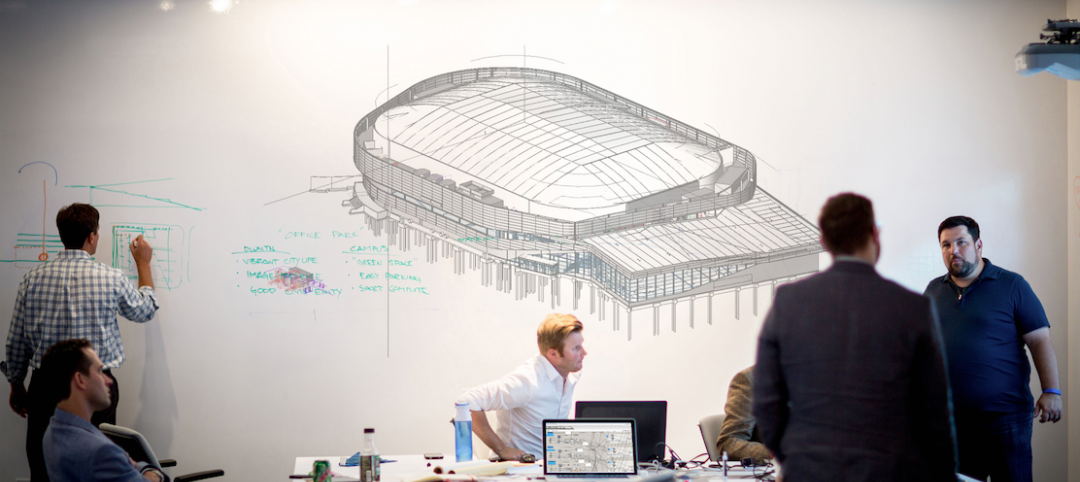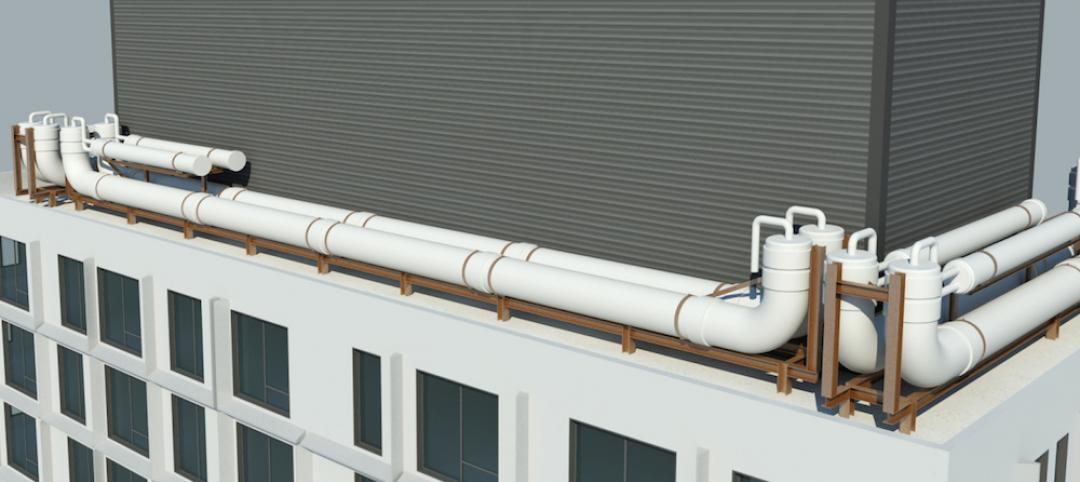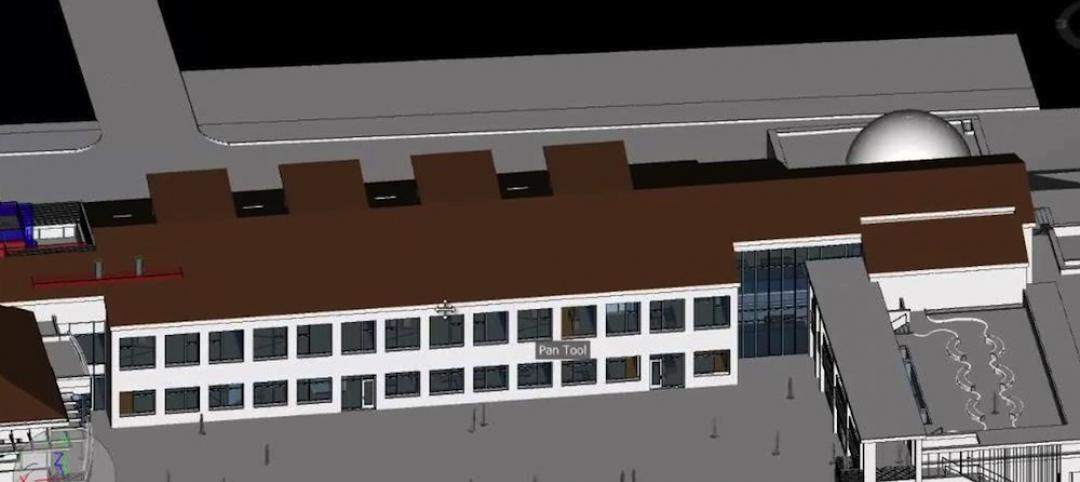For more than a decade Building Information Modeling (BIM) has been increasing its market share as the primary documentation tool for the architectural practice. BIM promises a more collaborative and integrated design and (hopefully) construction process. The fear is a “Wild West” amalgamation of models authored by various parties, unclear responsible control and licensing issues, and the reliability and changeable nature of digital data.
As architect’s, we’re at ground zero for this change being faced with increase requests and pressure to share the digital model with other project participants. While you could treat your BIM files like your old CADD files and avoid the risks by requiring a signed release agreement absolving you of any responsibility for Model content, that’s not how the BIM world is supposed to work. Sharing of and reliance on BIM data is central to the idea that BIM will lead to a more efficient, more economical, and more collaborative construction process. So rather than hunkering down and avoiding all risk, architects can intelligently embrace the opportunity and try to reap the rewards of improved efficiency, providing your client with a better value proposition and potentially reducing your exposure to project risk.
Establish ground rules with the AIA’s E203
There is no question that this is a transformational change to the rules of the game. When the model leaves the protection of your network there are legitimate concerns to address. Who is using it? The people I authorized, of course, but who did they give it to? What are they using it for? Please don’t tell me my Schematic Design Model being mined for material take-offs! These are legitimate questions and concerns, but they do not need to be showstoppers. To accommodate sharing your model, you need to be able to establish some ground rules for how the data will be used, who is allowed to use the data and what the consequences are when it is used differently. The AIA’s digital practice family – the E203/G201/G202 documents – provide a good contractual and practice tool for managing your BIM use and establishing those ground rules.
E203-2013 Building Information Modeling and Digital Data Exhibit is an exhibit document intended to be attached to the parties’ agreement. It covers the general issues related to the use of BIM. E203 establishes the basic ground rules, while the specific details are memorialized in G202-2013 Project BIM Protocol. This organization – an exhibit and separate form – allows you to establish a baseline understanding when a project is just getting started and then elaborate on that understanding as the project develops without amending the contract.
The most important aspect of E203 is the obligation it imposes on both parties to incorporate it in any subsequent agreement either party may execute with another project participant. This flow down obligation means that everyone on a project now has to play by the same BIM rules. The story doesn’t stop at the E203. In order to confidently share your model, you must set a floor for the minimum amount of information that will be provided and a ceiling for what users of can do with that information. These Use and Reliance characteristics are the basis for determining the Level of Development for model elements, and G202 provides the framework to accomplish this task.
The G202 table lists each model element and then provides columns to define the Level of Development and the party responsible for modeling that element for each relevant project milestone. It is important to note that we are talking about model elements and not the whole model. Every model is an aggregation of model elements each developed to an appropriate level, but not uniformly for the whole model – a door, for example, is quite commonly modeled at Level 200, but the hardware for that door is still described in the metadata, not actually modeled.
State of Utah started simple
At first glance, E203 and G202 are daunting document – literally pages of information and dense tabular material with many boxes to fill – but once you’ve worked your way through that first G202, the rest will be easier. It’s pretty easy to dip your toe in this water. Develop a baseline version of E203 and G202 for use on every project. Start simple – find the lowest common denominator in the spectrum of your work and design your baseline to that as opposed to thinking about the most complex project you might encounter. In our initial attempts at this we, found that we placed too high a Level of Development (LOD) expectation for many model elements – yes, you might choose to model something to a higher level in order to explore the design idea, but in order to meet the obligations of your contract you only need to model to something less. Most public work that falls under procurement law requirements shouldn’t need elements modeled beyond LOD 200.
If you need an example document, the State of Utah, Division of Facilities Construction and Management has two licensed versions of G202 that set the protocols for its projects. One is designated for the design-bid-build delivery model where the model is not intended to be used by the constructor, and the other is optimized for a Construction Management delivery model where the CM is expected to use the model during construction.
The payoff
Of course, it’s not just about the forms. Undoing 30 years’ habit is not easy. Your staff has to understand that there is no more disclaimer – we are trusting the model, and it has to be accurate – and they have to believe there is a benefit to your practice to do so. But, if you’re careful in establishing your baseline protocol, I think you’ll find that there is no more effort involved for you to prepare to share a model than you were already making when you thought it was inconceivable.
The trends in the marketplace are clear. Increased collaboration, model sharing and the comingling of design and construction data is coming if not, at least to some degree, already here. Will you be left behind, or will you find a way to manage the risk and provide your clients with greater value and service?
Related Stories
BIM and Information Technology | Jun 7, 2016
6 ways smart AEC firms are using computational design methods
Rapid prototyping, custom plug-ins, and data dashboards are among the common applications for computational design.
BIM and Information Technology | May 20, 2016
AIA and Autodesk introduce new feature to automate 2030 Commitment reporting data
The new automated connection will allow the more than 350 AIA 2030 committed firms to report their project and portfolio performance to the DDx directly from Autodesk Insight 360.
AEC Tech | May 10, 2016
Thornton Tomasetti launches new tech company
TTWiiN initially features six products and will add more via its own incubator.
Sponsored | BIM and Information Technology | May 10, 2016
Advanced laser scanning technology supports data collection and modeling efforts for Missouri’s Iatan 1 Power Plant
For the installation of a new heat exchanger, the power division of Black & Veatch contracted an engineering firm to laser scan the site, make a piping model in Autodesk® Revit®, and export it into AutoCAD® to deliver results.
AEC Tech | May 9, 2016
Is the nation’s grand tech boom really an innovation funk?
Despite popular belief, the country is not in a great age of technological and digital innovation, at least when compared to the last great innovation era (1870-1970).
Big Data | May 5, 2016
Demand for data integration technologies for buildings is expected to soar over the next decade
A Navigant Research report takes a deeper dive to examine where demand will be strongest by region and building type.
BIM and Information Technology | May 2, 2016
How HDR used computational design tools to create Omaha's UNO Baxter Arena
Three years after writing a white paper about designing an arena for the University of Nebraska Omaha, HDR's Matt Goldsberry says it's time to cherry-pick the best problem-solving workflows.
Drones | Apr 25, 2016
The Tremco SkyBEAM UAV is the first to be approved by the FAA for nighttime commercial operation
The SkyBEAM UAV is used for identifying energy leaks, rooftop damage, deteriorating façades, and safety issues without requiring scaffolding or cranes.
BIM and Information Technology | Apr 21, 2016
U.K. imposes BIM requirement on government projects
U.S. unlikely to follow suit.
AEC Tech | Apr 15, 2016
Should architects learn to code?
Even if learning to code does not personally interest you, the growing demand for having these capabilities in an architectural business cannot be overlooked, writes computational design expert Nathan Miller.

















